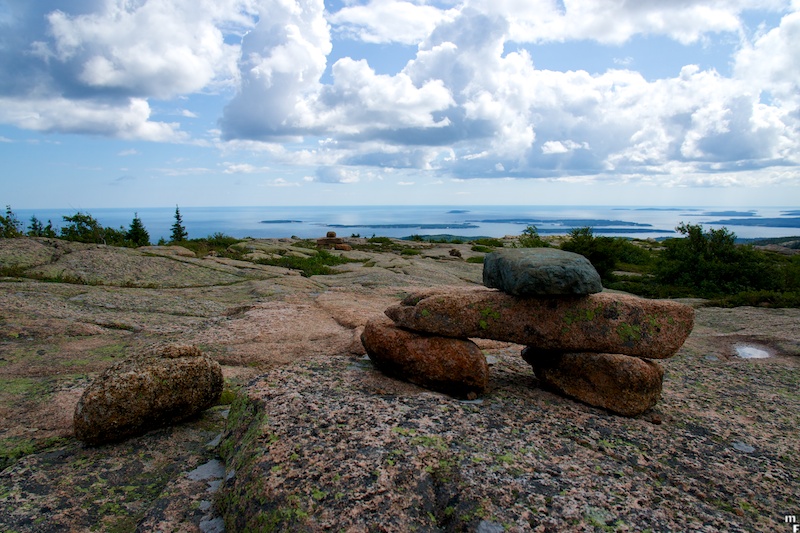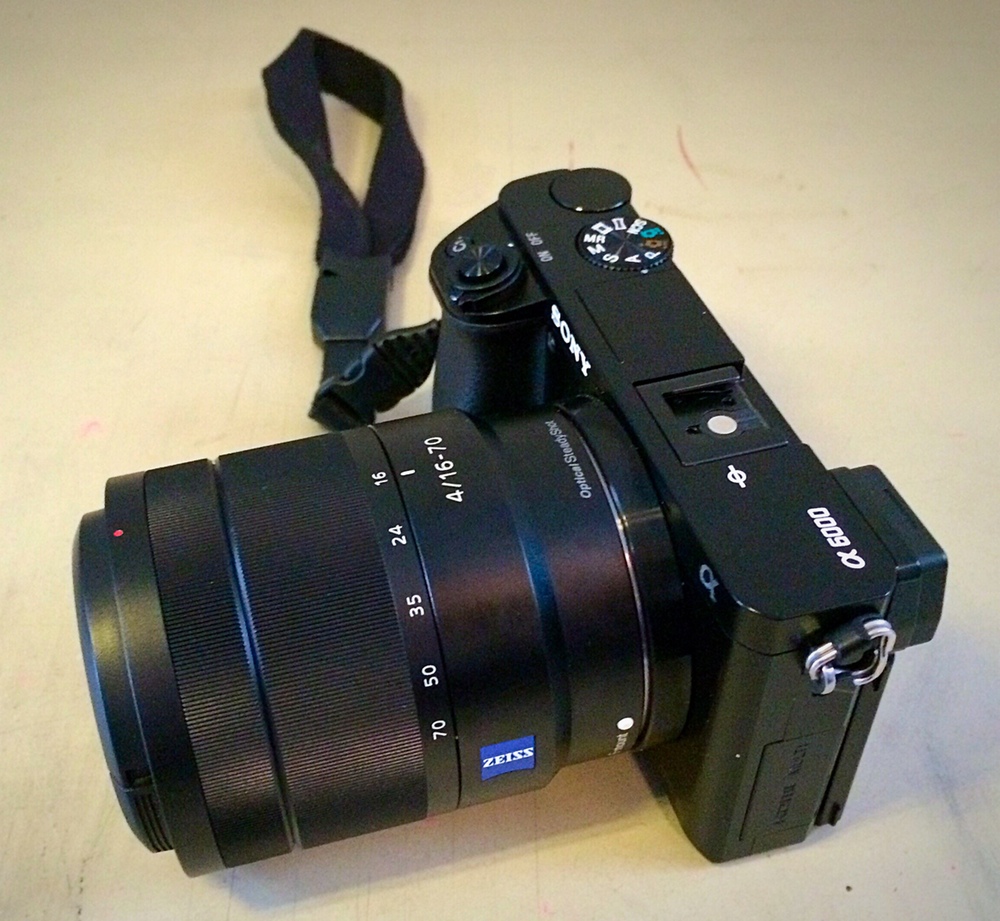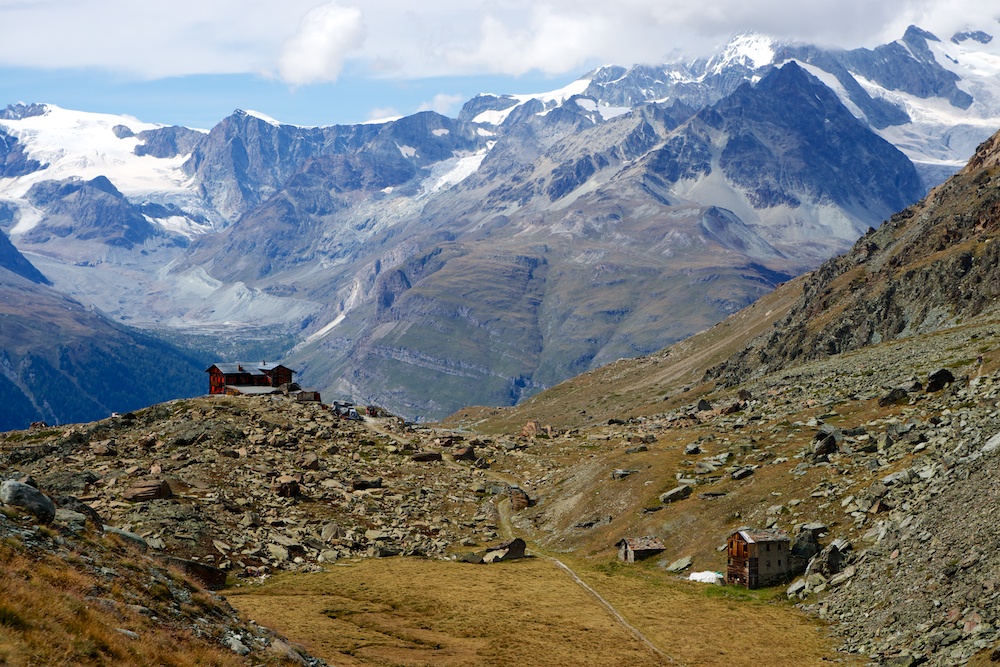Sony a6000 with 16-70mm lens
12 November 2014
There's been a steady rise of mirrorless cameras in the last few years. It seems all the cool kids have been getting into the Fuji X series. Although I'm not that concerned with camera gear, I have been keeping an eye on this trend myself - although I'm happy with most aspects of my current Canon DSLR system, there is one area where it comes up short - or rather comes up heavy, since the problematic aspect is weight.

Cadillac Mountain, Acadia National Park, ME
My first serious digital camera was the Minolta A1. It was primitive by modern standards, small sensor, fixed lens, but it weighed in at 650g. That meant that it was easy to carry around, usually in a case that I threaded onto my belt. When it died and I got my first Canon DLSR, the increased weight meant that I now needed a special camera belt to carry it around on. Although the Canon was a much better camera, I missed the weight of the A1.
So I've been watching the mirrorless scene, keeping an eye out for my neo-A1. The Fujis have got very close, but a vital element in the camera body is a tilting LCD display. Although I use the viewfinder most of the time, I do find it valuable to use a tilting display when I want to shoot at different angles: low down, overhead, or to get the right angle on a flower. The rangefinder format Fujis didn't have a tilting screen (or lacked a viewfinder). The XT-1 does, but it then broke my weight limit.
Although a lot of photo-blog concentrates on the Fujis, they aren't the only mirrorless game in town. The micro 4/3 cameras have been around for a while, but I didn't fancy reducing the sensor size. About a year ago a friend showed me his Sony NEX-6. It seemed to hit all the right buttons for me, but it didn't have a lens that was right for me. I didn't like the power zoom on the kit lens - I wanted a good quality normal range zoom, something cose to the 15-85mm that spends most time on my Canon 60D.
So the appearance of the Sony-Zeiss 16-70mm lens, really made the Sony route pretty attractive. I waited for the Sony a6000 camera (the new version of the NEX-6) to be supported by Apple's raw processing and then went and bought the package. I've now used the combo for a few months, so can make an informal review.

My Sony a6000 with the Sony Zeiss 16-70mm lens. (While the other photos in the article were taken with this camera, I used my iPhone and nova for this one.)
Number one question for me, is the ergonomics - how much do I enjoy using it? My answer is “a lot”. The weight is back down to the A1 levels, so I got a case that will thread onto my belt and a wrist strap. The whole setup is much more fun and convenient, the camera is out of the way until I need it, and I can get to it quickly when I do. The lens zooms smoothly and covers my common shooting range, and the lens balances really well with the camera. The camera controls are very customizable, you can assign most functions to any button, and I've found a setup that works well for me. The electronic viewfinder is big and bright, indeed my Canon's viewfinder now feels small when I use it. I particularly like the fact that I can set the electronic viewfinder to show subtle zebra stripes on over-exposed highlights, which means I don't need to chimp to check highlights any more.
A lot of people like the Fuji's retro controls: aperture dial on the lens, dedicated shutter speed and ISO dials. Although they appeal to my nostalgia, I suspect the mode dial approach of the Sony works better for me. There are times when I like being able to switch quickly from shooting a landscape (aperture priority at f8) to shooting people (shutter speed at 1/250), and being able to do that with a single click of the mode dial is very handy. (The Sony also has the ability to save settings in presets, but I haven't felt the need to figure that out yet.)
So how about image quality? I worry less about a camera's image quality then many people seem to. I consider that the quality of your camera is, at best, third on the list of factors of getting a good photograph. 1 And realistically, any camera I'm likely to buy is going to be a better camera than I am a photographer. Having said that I'm not noticing any reduction in quality compared to my Canon setup. In fact I've noticed a couple of things looking better. The rendering of clouds in some situations is strikingly nice. I also think I'm able to dig out more detail in over and under exposed areas of the RAW files, giving me more flexibility when tweaking the exposure in post-processing.
1: Number 1 on the list is being at the right place at the right time. Dawn in the Grand Tetons is always going to trump a cloudy lunchtime in Walsall. Number 2 is composition, a good photographer will get better pictures with “lesser” equipment than a poor one.

Berghütte Fluhalp, Zermatt, Switzerland
So all in all, I'm very happy with the purchase. It's now my principal serious camera, and will be my usual choice for future trips.
I'm not yet at the point of getting more lenses for the Sony. There are a few that have some appeal. There is a nice prime pancake lens, which would allow me to pop the camera in a jacket pocket. Super-wide and tele zooms would replace those ranges on my Canon. But I'm not sure I'm so committed to the Sony system yet that I want to invest in many more lenses.
One lens I would most want is the equivalent to my Canon 100mm f2, which I find really handy for my informal portraiture. If I could really stretch out my wish list, I'd like some way to link the camera to my Nova flash unit. The Nova is such a convenient flash to carry around, it would be lovely to use it with cameras other than the iPhone.

Xu Hao, Thoughtworks Head of Technology for China
Most of the time, I prefer using the Sony, but there are cases where the Canon still has an edge. I enjoy taking informal portraits of my colleagues during meetings, here I find the Sony is a little slower to be ready to shoot, only a second or so, but that's significant when you want to get someone laughing. I also think the Canon would be better for wildlife or sports - although I rarely do those. I still have flash gear and more lenses for the Canon, and if I'm not concerned about weight I'm happy to keep using it.
But generally I would recommend this combination. If you have an SLR and are looking for less weight, then it certainly fit the bill for me. If you're looking to get into serious cameras then, unless you are expecting to do wildlife or sports, I would recommend going mirrorless, and this is a fine option.
Footnotes
1: Number 1 on the list is being at the right place at the right time. Dawn in the Grand Tetons is always going to trump a cloudy lunchtime in Walsall. Number 2 is composition, a good photographer will get better pictures with “lesser” equipment than a poor one.

